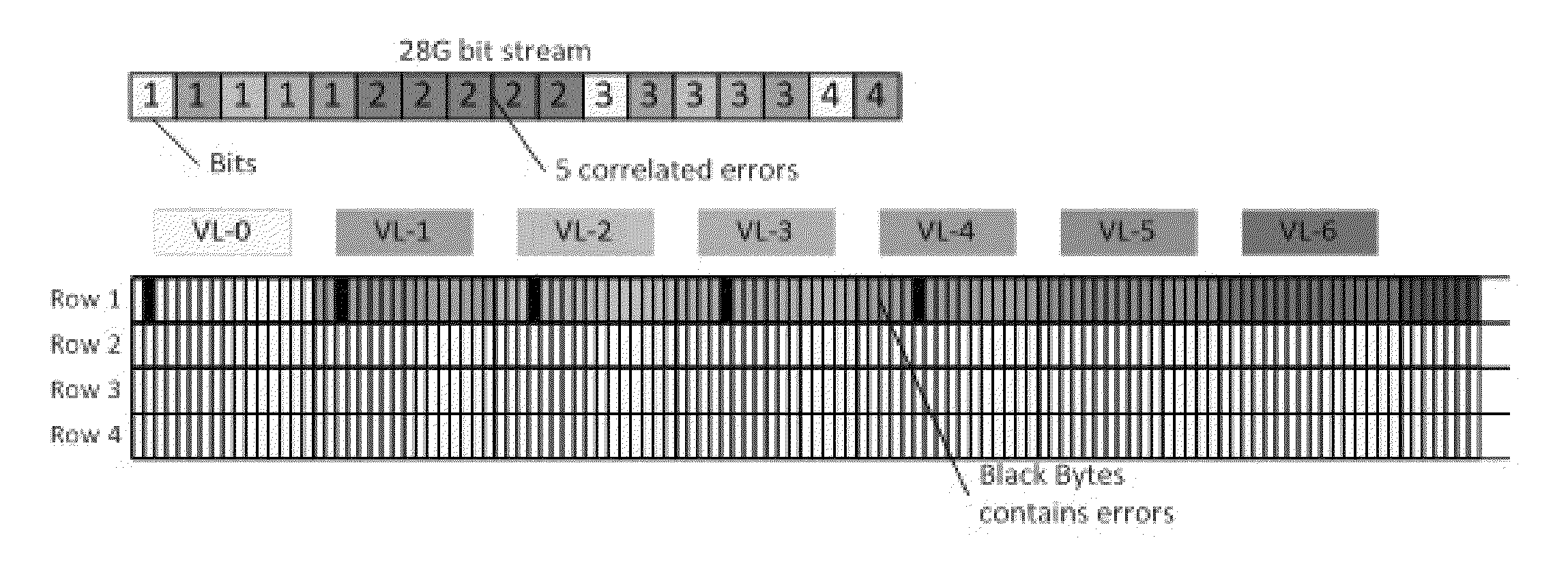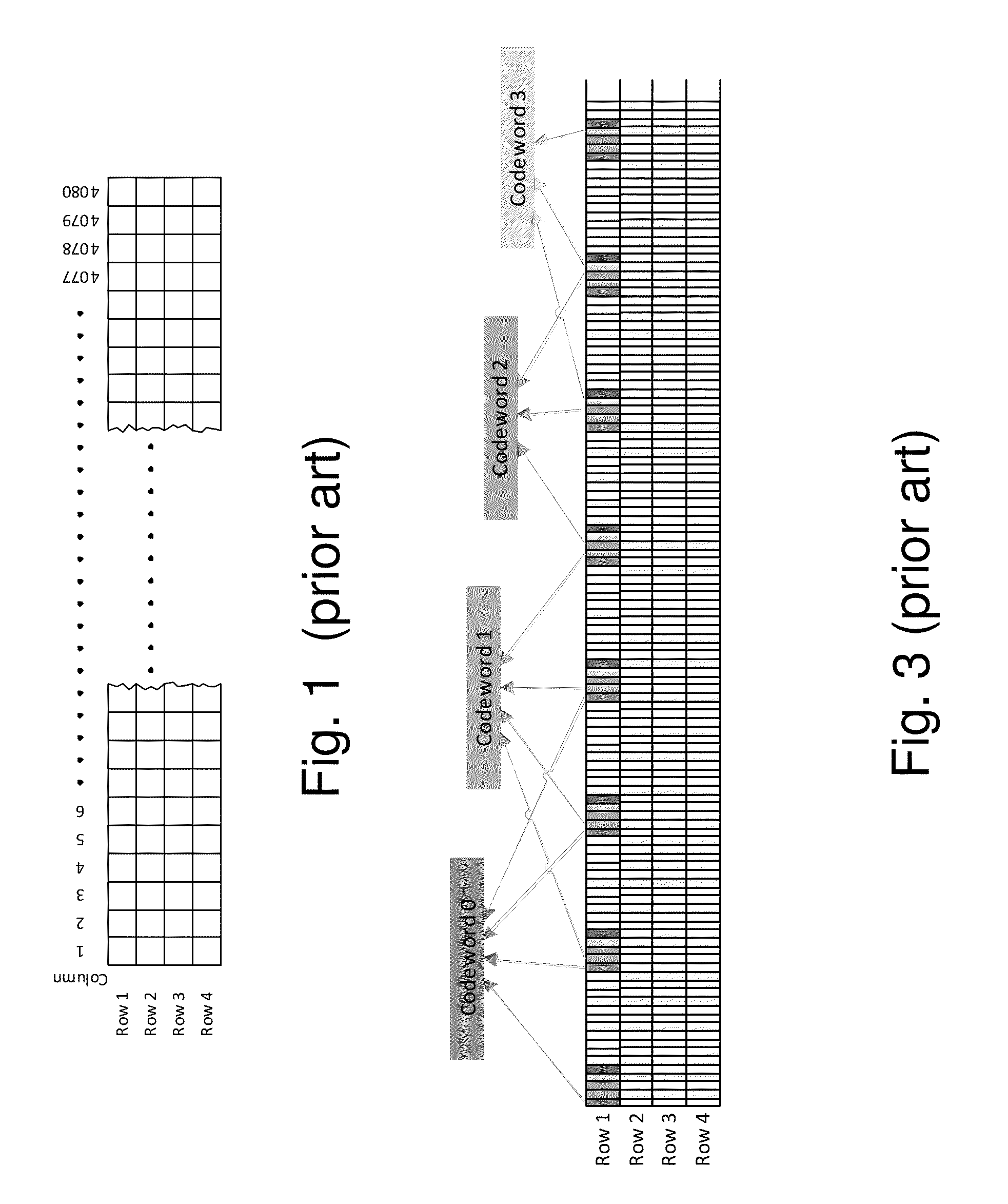Method for increasing the probability of error correction in an optical communication channel
a technology of optical communication and probability, applied in the field of data communication, can solve the problems of increasing the probability of post-fec errors, difficult implementation of high-rate data serially over one physical communication channel (link), and so as to achieve the effect of reducing the bandwidth of the communication channel
- Summary
- Abstract
- Description
- Claims
- Application Information
AI Technical Summary
Benefits of technology
Problems solved by technology
Method used
Image
Examples
Embodiment Construction
[0029]The present invention suggests a method for improving the resilience of a communication channel to correlated errors. The channel is formed by a time-multiplexed aggregation of a plurality of lower rate constituent (virtual) lanes and employs a Forward Error-Correction (FEC) mechanism, for forming codewords from data carried by these constituent lanes. According to the proposed method, specific delays to the transmission times via the constituent lanes are introduced at the transmitter side, relative to each other, thereby modifying the distribution of channel error bursts in an optical communication channel which complies with the G.709 transmission standard, in order to eliminate the interaction between the Multi Lane Distribution (MLD) and the Generic Forward Error Correction (GFEC) mechanism at the receiver side. This method increases the probability of error correction in an optical communication channel and reduces vulnerability of the optical communication channel to no...
PUM
 Login to View More
Login to View More Abstract
Description
Claims
Application Information
 Login to View More
Login to View More - R&D
- Intellectual Property
- Life Sciences
- Materials
- Tech Scout
- Unparalleled Data Quality
- Higher Quality Content
- 60% Fewer Hallucinations
Browse by: Latest US Patents, China's latest patents, Technical Efficacy Thesaurus, Application Domain, Technology Topic, Popular Technical Reports.
© 2025 PatSnap. All rights reserved.Legal|Privacy policy|Modern Slavery Act Transparency Statement|Sitemap|About US| Contact US: help@patsnap.com



